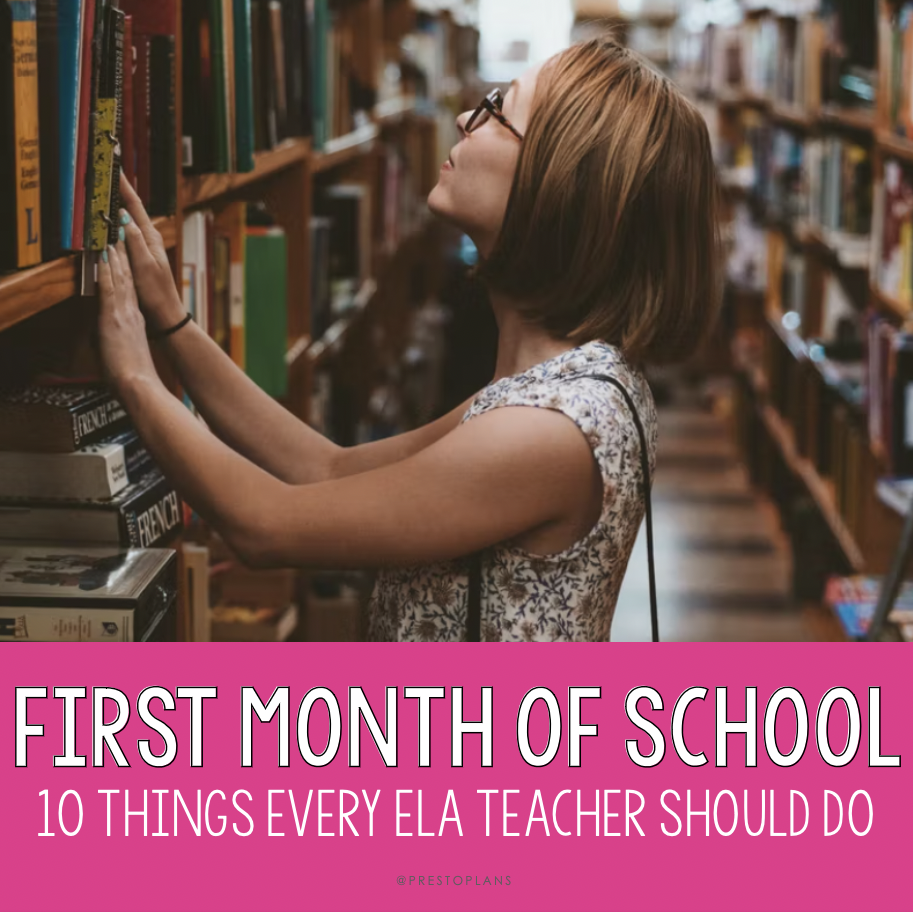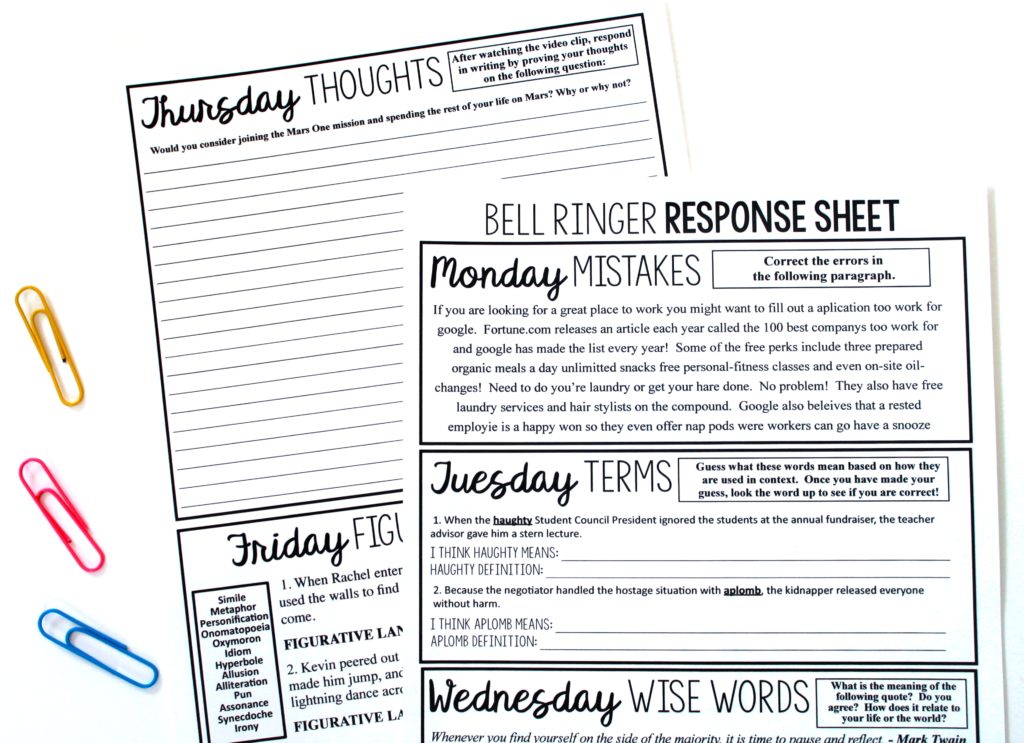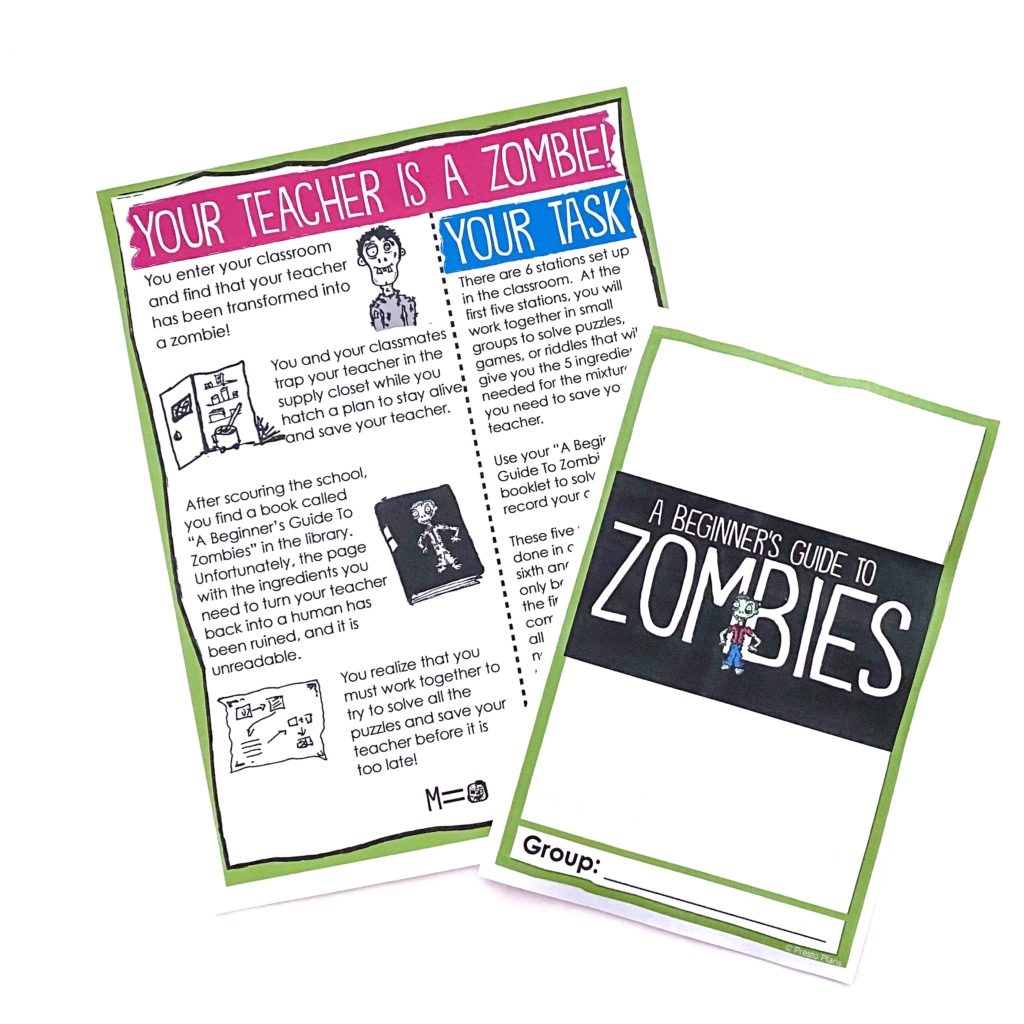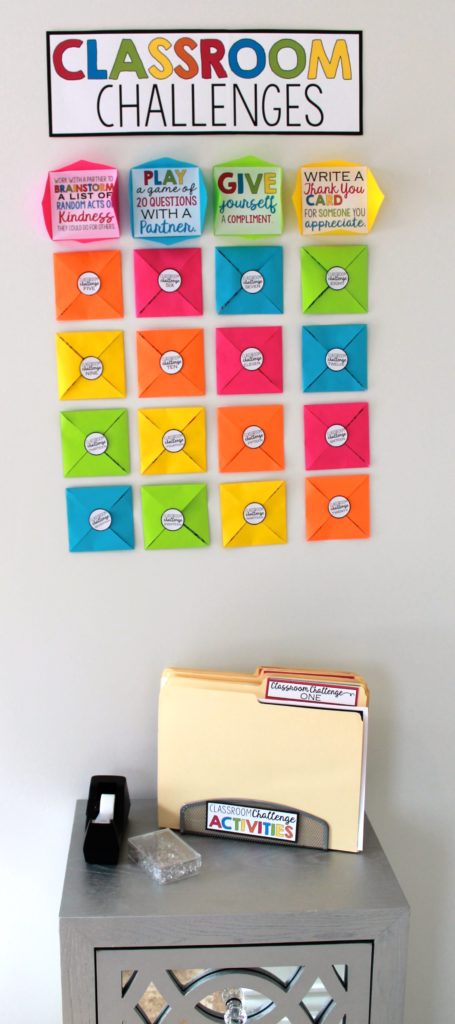PRESTO PLANS
Sent straight to your inbox
CLICK HERE TO ACCESS
Sign up to receive 10 ready-to-use ELA resources your students will love!
10 FREE ELA RESOURCES

10 Things Every ELA Teacher Should Do in the First Month of School
At the beginning of the school year, ELA teachers have the opportunity to build a strong foundation for their classroom that will carry them through the rest of the year. During the first month, it’s important to establish expectations, be consistent, and reflect and adjust where necessary. Here are 10 things every ELA teacher should do in the first month of school.
1. Establish Classroom Routines & Expectations
During the first month, you’ll want to establish your expectations for each part of your daily classroom routine. For example, you should be clear about what you expect from students when entering the classroom, what your rules are on phones, what the procedures are for passing in work, when to go to the washroom, etc. You might also lay out your rules surrounding talking (i.e. what, when, and what volume is appropriate).
During these first few weeks together, it’s important to be extremely consistent and disciplined with your expectations in order to keep your routines running smoothly throughout the year. Students need to not only know your expectations but also know that there will be consequences if they do not meet them.
In saying that, it’s also important to balance classroom community with expectations. I personally don’t lay out the rules in an authoritarian list on day one. Instead, I start with three basic rules of being respectful to yourself, our school, and others. Then, as other procedures present themselves (when students are ready to pass in work for example), we talk about the expectations around that procedure as we are doing them. This way, they are able to process the information in real-time instead of tuning out when a list of expectations is stated to them on the first day. By the end of the first month, students should have a good understanding of all of these ELA procedures and the consequences of not following them.
2. Develop ELA Procedures
In addition to establishing expectations around general classroom routines, you will also want to establish your expectations surrounding your procedures for things that are specific to your ELA curriculum, like your daily bell-ringer routine, for instance. Bell-ringers are an excellent way to establish a routine, set the tone, and improve ELA skills. Demonstrate how this will work from the outset by literally walking them through the process of entering the classroom, retrieving their bell-ringer booklets, submitting them to you, etc. Want to try this routine out in your classroom? You can grab four weeks of bell-ringers for FREE here.

The same approach should be applied to other daily routines like silent reading. Are students expected to bring their own books? What are the procedures for getting books from your library? How should the books be treated, and what’s the procedure for returning them? Can students whisper during silent reading, or must it be completely silent? Are they allowed to move around the classroom? Establish these types of procedures from day one.
3. Build Classroom Community
What it means to have a strong classroom community is difficult to put into words, but connection is at the heart of it—both amongst the students themselves as well as between you and the students. It means having a friendly classroom atmosphere and a feeling that you’re all working together towards a common goal. This doesn’t happen by accident. Classroom community is something that teachers need to cultivate!
BETWEEN STUDENTS
I find the best way to build classroom community among students is by getting them to work together to solve problems in fun and engaging ways. I like to use team-building activities for this. My absolute favorite team-builder to use at the start of the year is the zombie teacher escape room. For this activity, students learn that their teacher has turned into a zombie and they must work together solving puzzles and riddles to turn you back into a human!

I also like to do classroom challenges to get students working together towards a common goal. Set up your classroom bulletin board with folders that, when opened, reveal fun activity prompts for your class, like “write a thank-you card to someone you appreciate” or “play a game of 20 questions with a partner.” I do these weekly during—and beyond—the first month of school to foster kindness, collaboration, and teamwork in the classroom.
BETWEEN TEACHER AND STUDENTS
You will also want to be intentional about the relationship you are building between yourself, as the teacher, and the students. There is a saying in the teacher community: “Don’t smile until Christmas.” The idea is that by leading with an iron fist and establishing fear around your classroom rules and expectations during the first semester, you’re more likely to have obedient students.
Although there is some truth to the sentiment behind the statement—you do need to be consistent and disciplined with your expectations during the first month—I think that building a connection with students is equally important and that this approach is not a good way to build a connection with your students. My advice? SMILE the first month of school (and beyond). You can be kind, funny, nice, AND set expectations and stick to them with consequences where necessary.
4. Reading and Writing Conferences
At the beginning of every year, I like to do reading and writing conferences with students to get a sense of their individual skill levels. These are just short, one-on-one meetings where you have discussions with students about something they’ve written or read.
For reading conferences, you can sit down with students and ask them about something they’ve read to see if they understand it or if they need help with comprehension, fluency, etc. Writing conferences can be as simple as looking at a piece of their writing and asking them questions about certain choices or suggesting improvements. I try to do a 5-minute meeting for these with each student. Getting this one-on-one time with each of your students within the first month will be instrumental in your planning and in establishing a personal connection.
5. Student Interest Surveys
I believe that giving students voice and choice is important for engaging all learners, and one way I do this is by using student interest surveys in the first week of school. By learning about your students, you can be more intentional and adaptive to their interests to keep them engaged.
I find student interest surveys particularly helpful for deciding which texts to read and grouping students together. For example, if you’re doing a novel study and then discover that a lot of students are interested in one topic, you could change up the book to an option that might be more interesting to the class. Or you might find that there are lots of varied interests in the class but that there convenient groupings of students who you could group together.
I share more about this in my course with John Spencer called Empowered Readers, which includes a student interest survey, tons of other ELA reading resources, and everything you need to empower your students to become stronger and more engaged readers.
6. Hype up the library
Spark students’ interest in reading from the outset by making your classroom library the focal point your room. You can even rotate through “featured books” that you display on the lip of your board at the front of the room or on top of the bookcase. Every time you change the books, discuss the new selection with students.

If you don’t have a classroom library, you can still hype up your school’s library by having the librarian come in to talk about popular titles or by bringing students down there yourself.
I’d also recommend bringing book talks into your classroom, and not just as a student assignment. You can do your own brief book talk presentations on some of your classroom books in your classroom library or the school library to further get students interested in reading. You might even have your students organize your library using genre labels just to get them working with the books to expose them to what titles are available.

7. Display Student Work
Keep an empty bulletin board in your classroom and, during the first month of school, find opportunities to display student work on it. You might put a few students’ poems on here, for example. This is a great way to make your students feel seen in your class.
Once you have actually added work, bring students’ attention to this bulletin board and encourage them to interact with it. Of course, you’ll want to get students’ permission before posting their work there, as some might be shy. Even if you think the work is amazing, the student should be the person who has the last say on whether or not it should be shared. Also, make sure to be inclusive and not just display the same students all of the time. Try to include everyone on here before the year’s over at least once.
8. Give Extended Time for Silent Reading
When I was at school, I remember having a 5-10 minute reading block at the start of each class. I remember thinking that this amount of time was such a tease. It didn’t allow me to enjoy the reading process because it was constantly interrupted having to read in short increments.
Provide extended periods of silent reading time where possible, even if you can only manage to do this once every week or two. By blocking off half a class or even a full class devoted to reading, your students will be able to dive more deeply into their books and build more reading stamina over time. Also, it provides you with the perfect opportunity to do those one-on-one reading and writing conferences I mentioned above! John Spencer and I cover how to get students to read for more extended periods of time in our course Empowered Readers.

9. Make a Plan for Grammar
In my experience, there’s not always a unit devoted to grammar itself. Instead, grammar lessons tend to come up during other units or just when someone makes a grammar error. Because of this, I think it’s a good idea to find intentional and meaningful ways to make learning grammar part of the class routine. Make a plan for how you can integrate grammar throughout the year and implement it in your classroom right away.
I like to use a grammar challenge program with escape room-style challenges that make learning grammar fun and interactive for students. The one I use comes with 40 challenges, one for each week of the year. You can grab a FREE grammar challenge by clicking the image below.

10. Reflect & Adjust
The final thing I think every ELA teacher should do in the first month of school is reflect and adjust. At the end of the first month of school, take a moment to ask yourself how your profession is affecting your mental health, your physical health, relationships, and work/life balance. If the answers are mostly negative, take a moment to figure out how you can find more happiness and fulfillment in your job.
- Is there a student who is bringing you stress?
- How can you resolve the issue and make a connection with them?
- Are you working late into the night?
- How can you set some boundaries up between work and home?
- Are you eating well and taking care of your physical health?
- How can you set yourself up for success in this area?
- Are you struggling mentally?
- Could you benefit from a mental health day or seeking counseling from a friend or outside therapy?
Take time to reflect on these questions and make adjustments where you can.
There you have it! I hope that you have a great first month in your ELA classroom. In another post, I talk about What I Do the First Week Back to School in Middle School ELA. Click here to check it out.








Search the blog for what you are teaching
GIVEAWAYS
sent straight to your inbox!

share this post